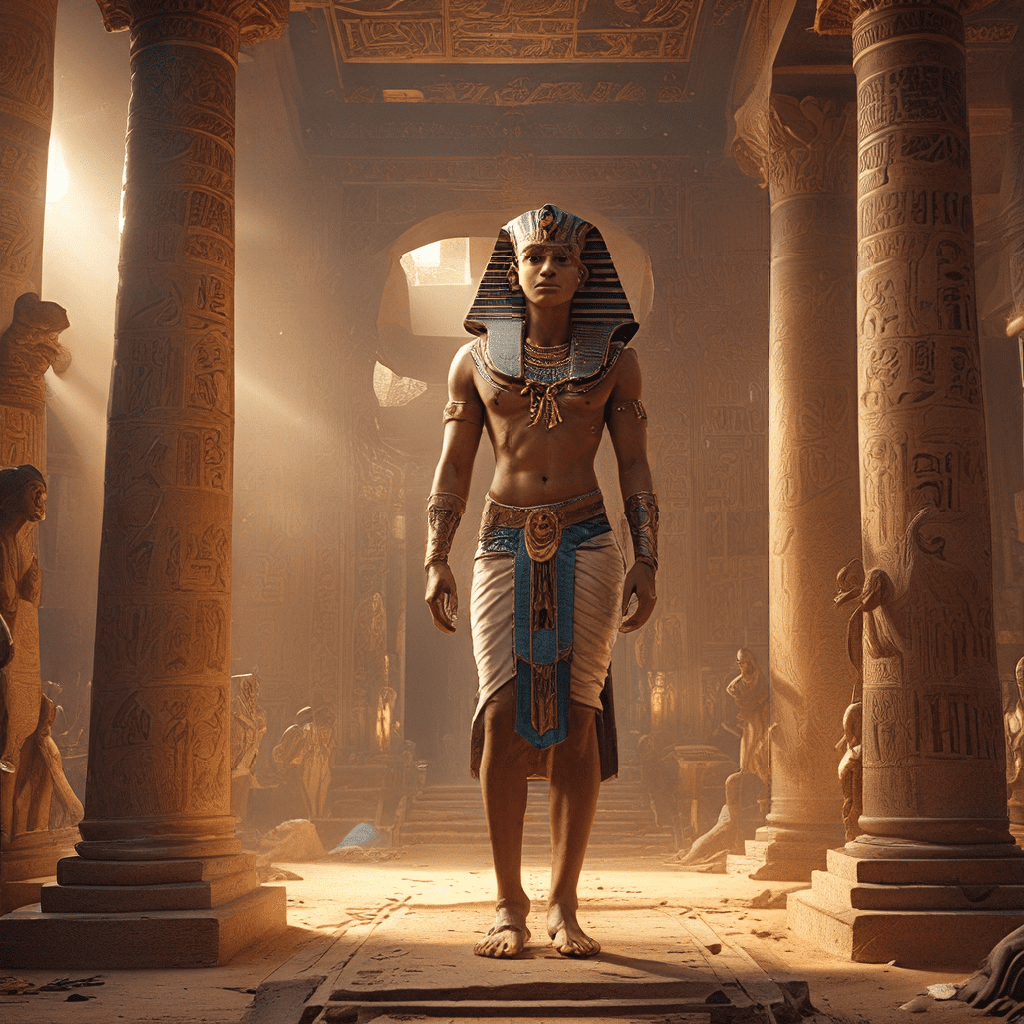1. Introduction: Unveiling the Hidden World of Ancient Egyptian Magic
Ancient Egypt, a land shrouded in mystery and wonder, was a civilization deeply intertwined with the mystical arts. Magic permeated every aspect of life, from daily rituals to grand ceremonies, shaping the beliefs, practices, and worldview of its people. Understanding the magic of ancient Egypt requires delving into the rich tapestry of magical texts, which act as primary sources, offering a glimpse into the secrets of a lost world.
These texts, ranging from spells and rituals to amulets and papyri, reveal a complex system of beliefs and practices centered around the interconnectedness of the divine, the natural world, and the human experience. Our journey through these ancient writings will uncover the intricate nature of Egyptian magic, its purposes, and the role it played in shaping the lives of the Egyptians.
2. The Nature of Magic in Ancient Egypt: From Divine Power to Practical Application
In ancient Egypt, magic was not seen as a separate entity but as an integral part of life, a force that could influence the world and interact with the divine. It was believed that gods and goddesses possessed immense power, and humans could access this power through various rituals and practices.
Magic was understood as a system of manipulating forces, both seen and unseen, to achieve desired outcomes. Unlike modern conceptions of magic, it was not simply about tricks or illusions. Egyptian magic was rooted in a profound understanding of the universe, the role of the divine, and the interconnectedness of all things.
The purposes of magic were multifaceted, encompassing healing, protection, success, and the attainment of supernatural abilities. Spells were used to cure illnesses, ward off evil spirits, ensure a successful harvest, and even to communicate with the dead. Magic was seen as a powerful tool to navigate the complexities of life and to connect with the divine realm.
3. The Magical Texts: A Tapestry of Ancient Wisdom
The magical texts of ancient Egypt offer a treasure trove of knowledge about their beliefs and practices. These texts come in various forms, each providing unique insights into the nature and application of magic. Among the most significant are:
* **Spells:** These are written formulas designed to invoke specific deities or forces to achieve desired outcomes. They often contain incantations, prayers, and symbolic imagery.
* **Rituals:** Detailed procedures that involved specific actions, offerings, and pronouncements to connect with the divine or manipulate forces.
* **Amulets:** Small objects, often made of precious metals, stones, or clay, inscribed with protective spells or symbols. They were worn for protection, good luck, and to enhance personal power.
* **Papyri:** Scrolls made of papyrus, containing collections of spells, rituals, and magical knowledge. The Book of the Dead, a collection of spells for the afterlife, is one of the most famous examples.
These texts are often written in hieroglyphs, the ancient Egyptian writing system, which employed a combination of symbolic imagery and phonetic elements. Understanding the nuances of hieroglyphic writing is crucial to decipher the meaning and purpose behind these texts.
4. The Role of the Magician in Ancient Egyptian Society
In ancient Egyptian society, magicians held a respected and often revered position. They were seen as intermediaries between the human and divine realms, possessing the knowledge and skills to manipulate spiritual forces for the benefit of individuals and the community.
To become a skilled magician required extensive training, often passed down through generations. They studied the nature of the divine, mastered the art of interpreting omens, and learned to perform rituals and pronounce spells with precision. Magicians were often associated with the priesthood, as both professions involved a deep understanding of religious practices and the divine.
The role of the magician extended beyond performing rituals and casting spells. They were also sought after for their knowledge of healing, protection, and divination. They played a vital role in advising pharaohs, protecting tombs, and ensuring the well-being of individuals and the nation.
5. The Power of Words and Rituals: Unleashing the Force of Enchantments
In ancient Egyptian magic, words and rituals were believed to hold immense power. They were not merely symbolic gestures but active forces capable of influencing the world and interacting with the divine.
The use of incantations, prayers, and oaths in spells and rituals was considered essential. Words were seen as carriers of energy, able to invoke specific deities, manipulate forces, and influence the course of events. These incantations were often spoken in a specific rhythm and cadence, believed to amplify their power.
Rituals involved a sequence of actions, gestures, and offerings designed to create a sacred space and connect with the divine. The performance of rituals was seen as a way of channeling energy, harnessing the power of the divine, and bringing about desired outcomes.
6. The Material World of Magic: Amulets, Talismans, and Magical Objects
In Egyptian magic, the material world played a crucial role. Amulets, talismans, and other magical objects were believed to possess inherent power, capable of protecting individuals, warding off evil, and enhancing personal abilities. These objects were often inscribed with spells, symbols, or images of deities, each representing a specific purpose.
Amulets were worn as necklaces, bracelets, or rings, placed on the body to provide protection and enhance personal power. Talismans, often larger than amulets, were used for specific purposes, such as warding off illness or attracting good fortune. Magical objects, such as wands, staffs, and incense burners, were used in rituals to enhance the power of spells and connect with the divine.
The use of these objects represents the interconnectedness of the material and spiritual realms in Egyptian magic. The material object served as a conduit for spiritual power, a tangible symbol of intangible forces.




